

Write what you are looking for and press enter to begin your search!
Live News
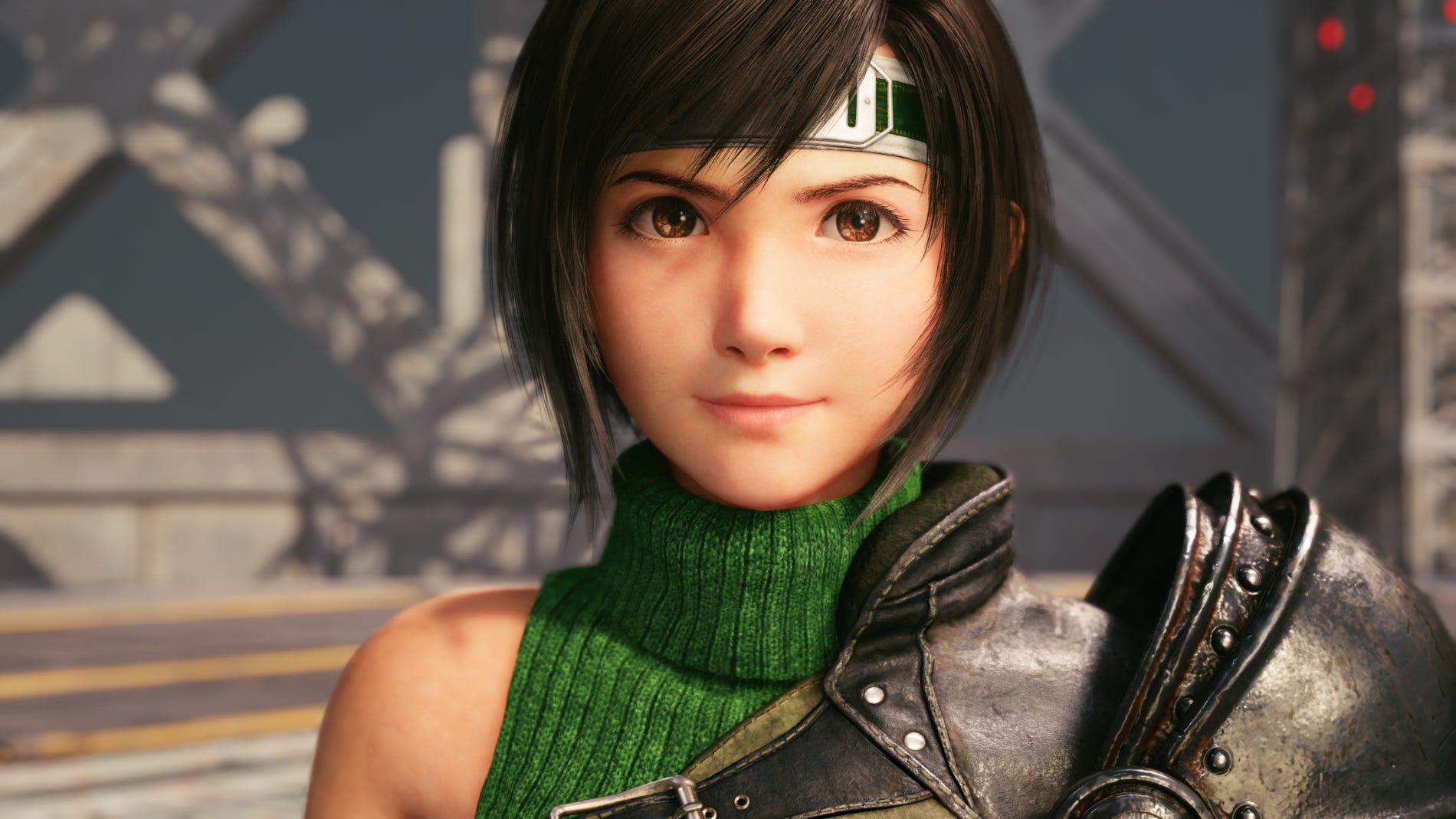

Fantasy Stars: Ranking All The Final Fantasy Games From Fabulous To Flat
 ">
">
By Jonathan ToyadVerified|January 31, 2022|4 Comments
If you know JRPGs, you should damn well know the Final Fantasy series. This series, and arguably Dragon Quest but no one gave a s*** until the late 2000s, help shape everybody’s perception of JRPGs. Created by former Squaresoft/Square Enix developer & producer Hironobu Sakaguchi, the series started off as a desperate attempt to survive in the cutthroat games industry, which then blossomed into a multi-million dollar franchise and property that also spawned a number of sequels, spin-offs, and animated features.
To celebrate the birthday of Mr. Sakaguchi’s pride and joy on the Famicom back in 1987, I’ll be examining each main Final Fantasy title and then rank them all from bottom to top. I’ve played too many Final Fantasy games to the point that I’m pretty confident this list is the be-all-end-all one.
Here are the rules:
Which entry is the best? Which entry defined the Final Fantasy name and experience as a whole? Which entry is obsolete and was just a product of its time? Take a look below and see if I’m right or wrong. Okay, I probably am right; my goddamn Final Fantasy part of my brain would otherwise be left there for naught.
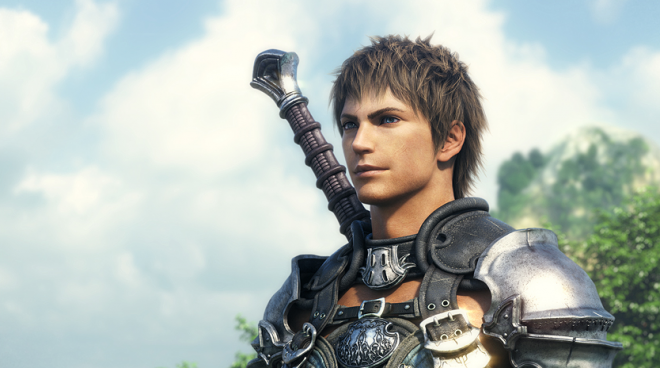
In Square Enix’s infinite wisdom, they followed up their online magnum opus Final Fantasy XI with…this.
Final Fantasy XIV felt like a step backwards; it used the old quest system and class design of FFXI without any of the polish and improvements expected for a spiritual sequel.
The game’s world and aesthetics were rather lifeless and, for reasons only known to Square Enix’s internal committee, was a processor hog for computers. And this is coming from a company renowned for creating and optimizing awesome graphics and presentation tech for their games.
The original FFXIV is so bad and so broken, it made Square Enix reevaluate their stances in making Final Fantasy games. They went above and beyond the call of duty by swallowing their pride and burning down the foundations of this hot mess that needed more Phoenix Downs than usual. Thankfully, their second take did succeed; we’ll be touching upon that further up on the list.
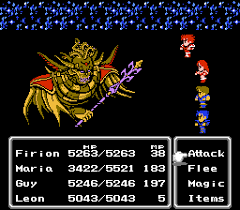
This game came out a year after the first Final Fantasy game made headlines in Japan back in 1987. This JRPG introduced new mechanics like the ability to level up your individual skills and stats, as well as a simple-yet-dramatic narrative (which were novel concepts in the late 80s).
Both concepts fell apart in practice. Players could beef up their characters by hitting their own party members. The game’s system did not take into account that whether you’re fighting stronger or weaker enemies, the amount gained from levelling up is the same.
While heroes had names and personalities, they never went beyond their archetype. The dungeon design was horrendous too, with some rooms and secret areas not containing anything and usually filled with a higher enemy encounter rate than most. This is one FF game you can skip.
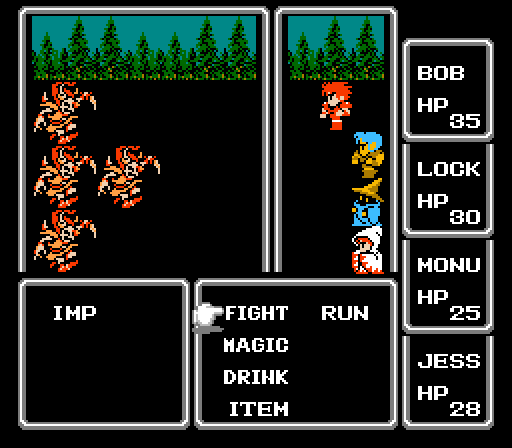
While the very first Final Fantasy was a landmark in RPG history, it sure as heck did not age well. Just like any first draft of a movie script or a TV pilot, there are a ton of rough edges that were smoothed out with each new sequel.
If you must revisit the game that started it all, you should check out the PSP remakes which smoothed out the menu and selection system.
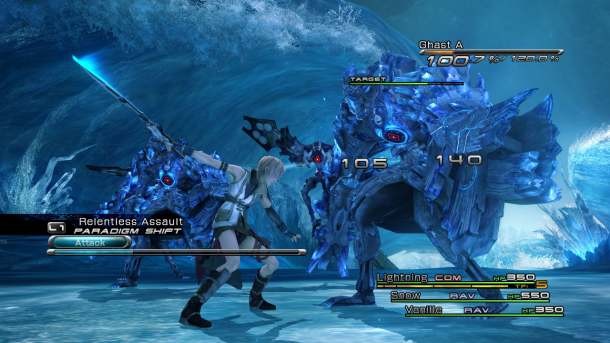
Pretty and simple: that’s the ethos of the thirteenth mothership FF title. The game wanted to take a more linear and cinematic approach to the genre. The problem was that FFX did a better job at it without sacrificing its complexity, thought-provoking narrative, and deep levelling systems.
Instead, a lot of mechanics were streamlined. The Paradigm combat system lets you change roles and classes on the fly so that you’re ready for any fight, especially against bosses that can change up their strategies and attack patterns at a whim. The levelling up system just makes you fill up a role’s crystals without any sort of branching path to customize them.
FFXIII’s sequels improved further upon the base template, so you should play those instead if you want a meatier FF experience. But for the sake of this list, we’re putting this at the bottom because this mothership title was so uninspired and trite, it needed its two sequels to carry it to some form of relevance.
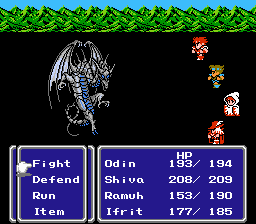
Final Fantasy IIIÂ was a leap forward in terms of innovation back in the early 90s; it introduced the revolutionary Job System where your four playable party members can change their character class anytime they want (except during combat). This led to a lot of inventive and challenging battles and boss scenarios where you need to change your entire team to a specific bunch of classes to stay alive and endure.
The game also built upon the previous games’ template, with a rich narrative, a load more continents to explore, and some exceptional dungeon design that challenges players to their wit’s end. However, there were later entries and spin-offs that made part 3 a tad obsolete.
At the very least, FFIII serves as a reminder of the good old days and a lesson in how to up the ante for your franchise’s future.
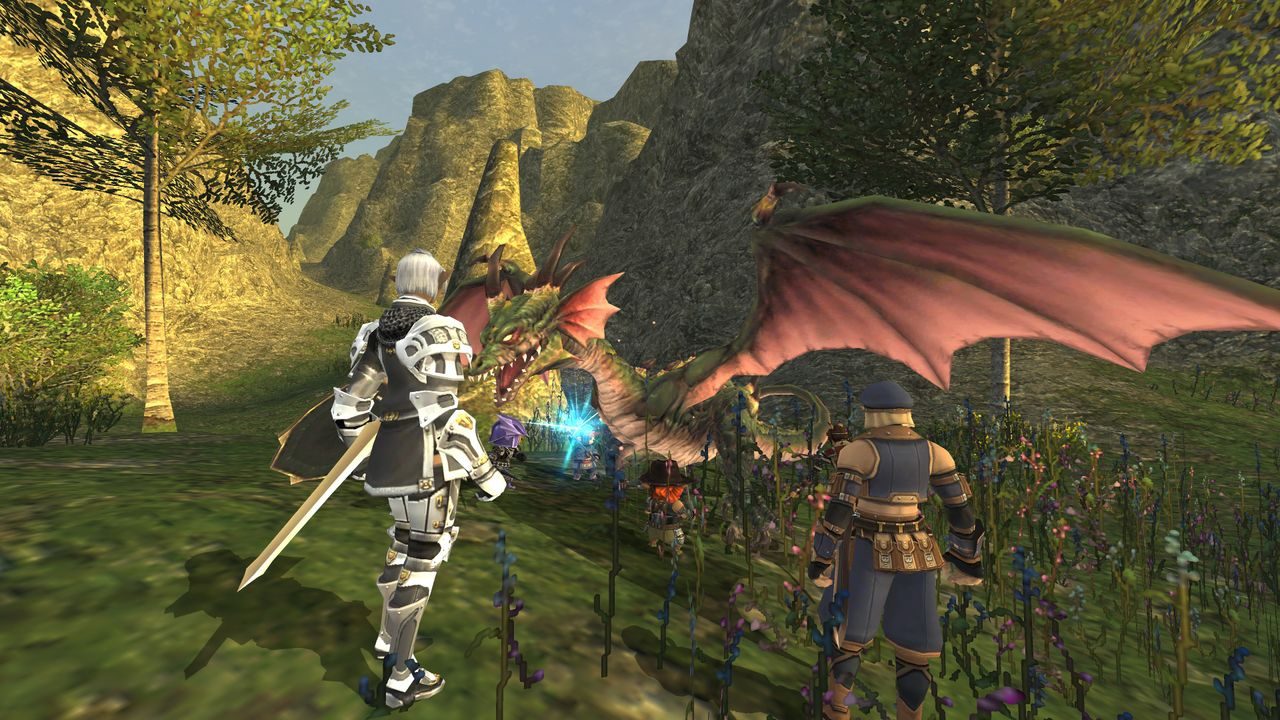
Since its global release in 2004 until now, Final Fantasy XI has been the only go-to mass online RPG congregation for FF fans (apart from game forums). The game predated World of Warcraft and was one of the few pioneers in the MMO landscape, with numerous expansions that made the game livelier with more quests, more continents, and more classes.
It was a landmark, but it’s not active anymore. It did pave the way for the next online entry in the Final Fantasy series, which we will get to later on this list.
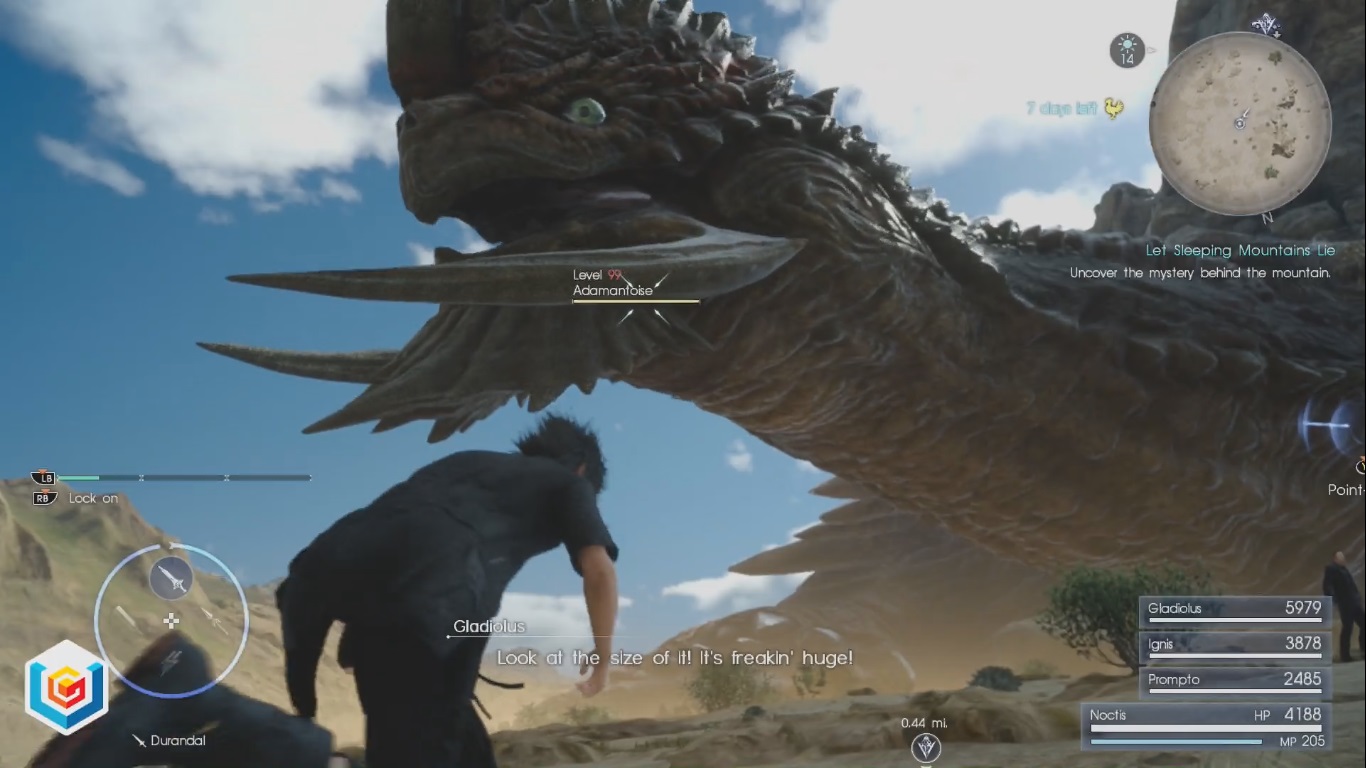
A game literally 10 years in the making; this entry used to be called Final Fantasy Versus XIII back in 2006. The final product ended up being an ambitious game with quite a number of potholes that needed filling.
That said, the game’s open-world concept was brought out to full force here, as the world of Eos is vibrant and full of activities and secrets waiting to be discovered. Even though you only control one person in combat, the four-man tag team fighting is fast, fluid, frenetic, and a joy to play from start to finish. There are also a ton of giants and mob bosses to hunt for and fight.
True, the game’s story needed a lot of work in its middle portion, but the camaraderie between protagonist Noctis and his pals Gladio, Prompto, and Ignis is the game’s highlight from a narrative standpoint. We can’t really care much about an RPG if there aren’t any characters to root for; FFXV covered that with its four main heroes.
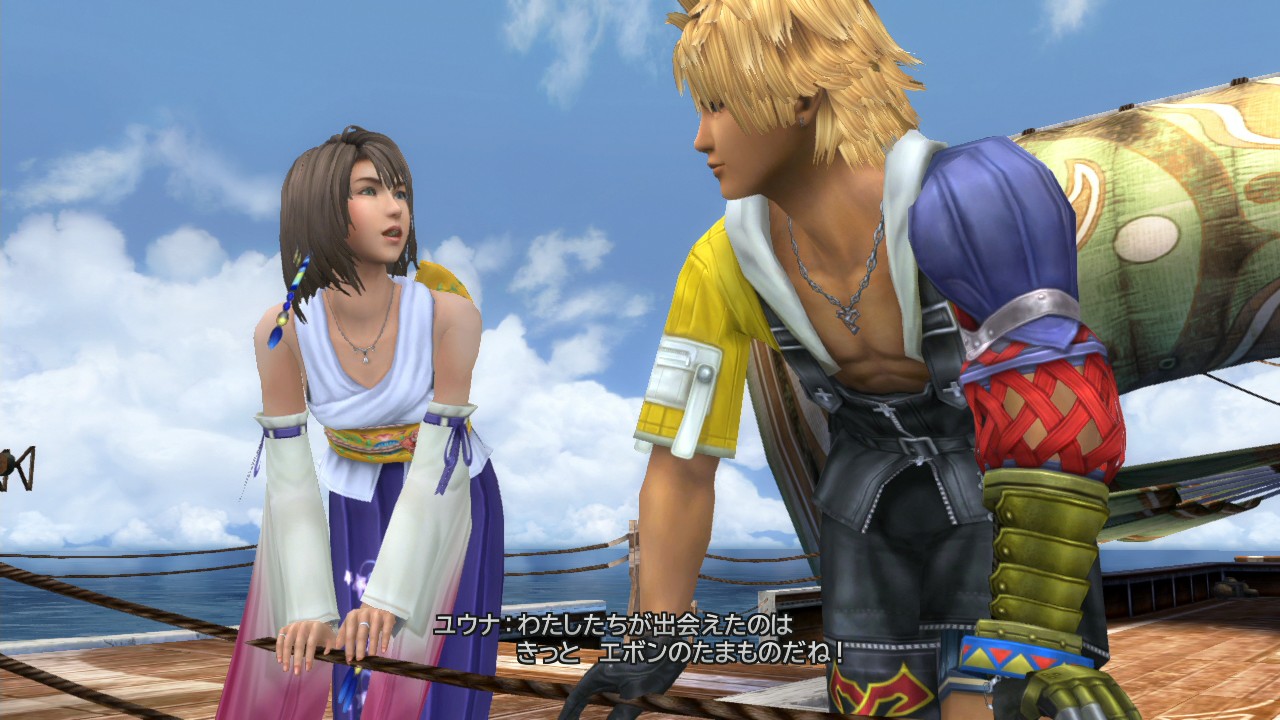
A number of people decry Final Fantasy X for its linear storytelling nature. However, there’s actually more to the game than meets the eye.
For starters, FFX eschews the Active Time Battle system introduced in FFIV in favour of a turn-based party-switching combat system. Since all the major fights in the game require more than three classes, the combat’s flexibility lets you temporarily bring in a party member to buff or even cast that game-winning spell just to turn the tide of battle.
Secondly, the game’s plot is rather dark and sombre as it deals a lot with the concept of death and the afterlife; the Danse Macabre. The main leads in the game, Tidus and Yuna, have to deal with the burden of succeeding the predecessors and parents while also fighting off a world-ending beast that’s more of a force of nature than an actual bad guy trying to conquer the world.
Third and last, there’s actually still a bevvy of sidequests and optional fights to deal with despite the game’s linear nature. While not as big a world to explore, there is still some fun to be had in the world of Spira. If anything, FFX represents a tonal shift that is welcome since its past wacky and bright iterations.
And if you want to start off with the FF series that isn’t made before 2000 and see what the hubbub is with the series, FFX is great in that regard. Everything about it is laid out for you to learn the ropes and its classes, since it’s the most “linear” FF of the lot.
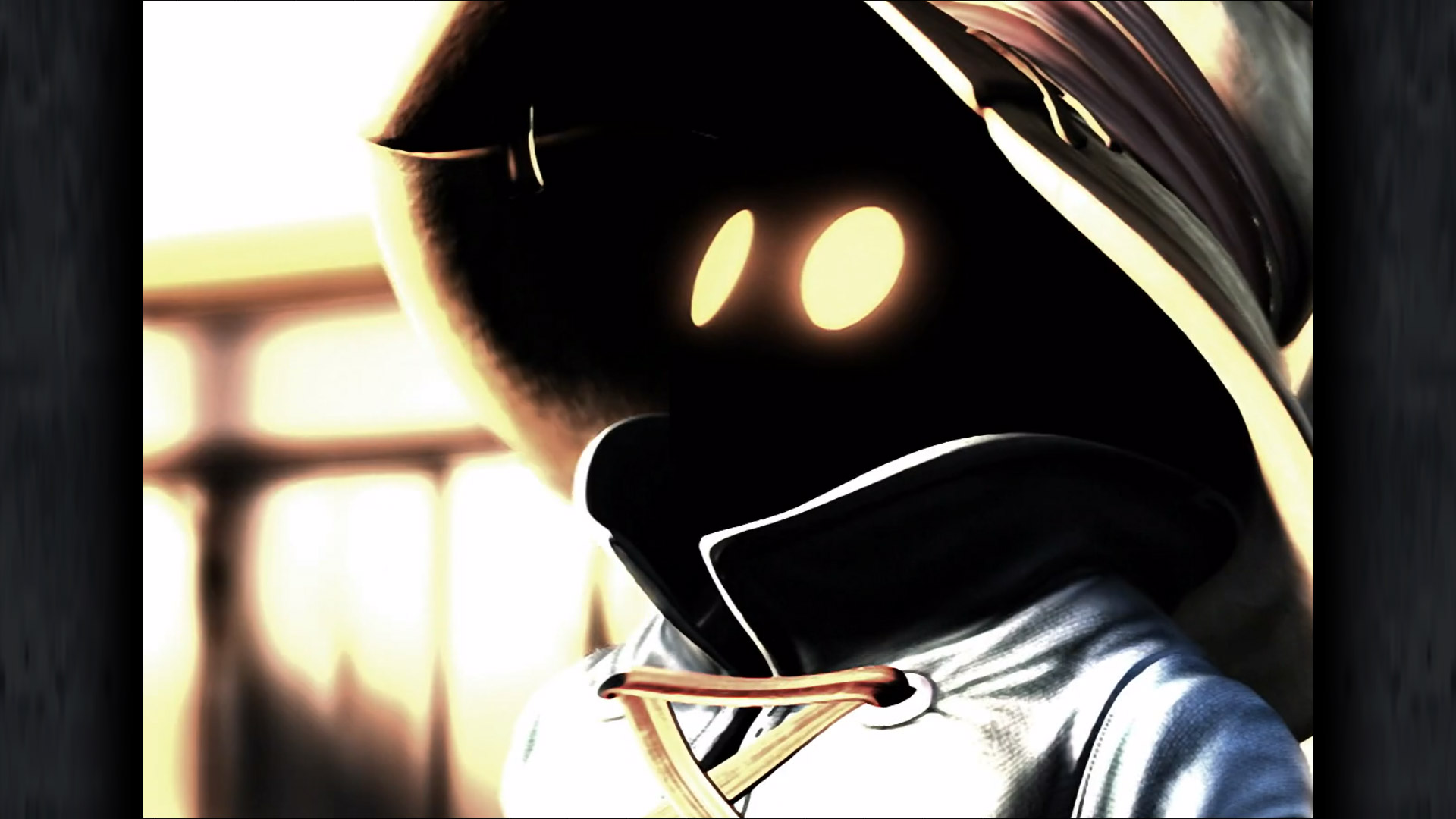
FFIX is what happens when Square Enix decides to create a “Greatest Hits†compilation in a form of a self-contained FF entry. The game features a revved-up Active Time Battle system with a four-man party, a world with a bunch of FF homages from black mages to callbacks from the first FF to FFV, and a ton of random encounters for every step you take on the world map. The game is nostalgia-pandering for good and ill.
FFIX also boasts a likeable cast from the cheery swashbuckling-style hero Zidane to the tough-as-nails female dragoon knight Freya, as well as oddities like Quina. While the game’s second and third act is a jumbled mess with varying tones narrative-wise, the rest of the package is a great tribute to the golden days of JRPGing yore.
The game is available on PC and even on mobile phones with much-needed features like a fast-forward button. So if you want a 3D version of a classic Final Fantasy game and can’t stand going back to retro trappings of games, you can’t go wrong with FFIX.
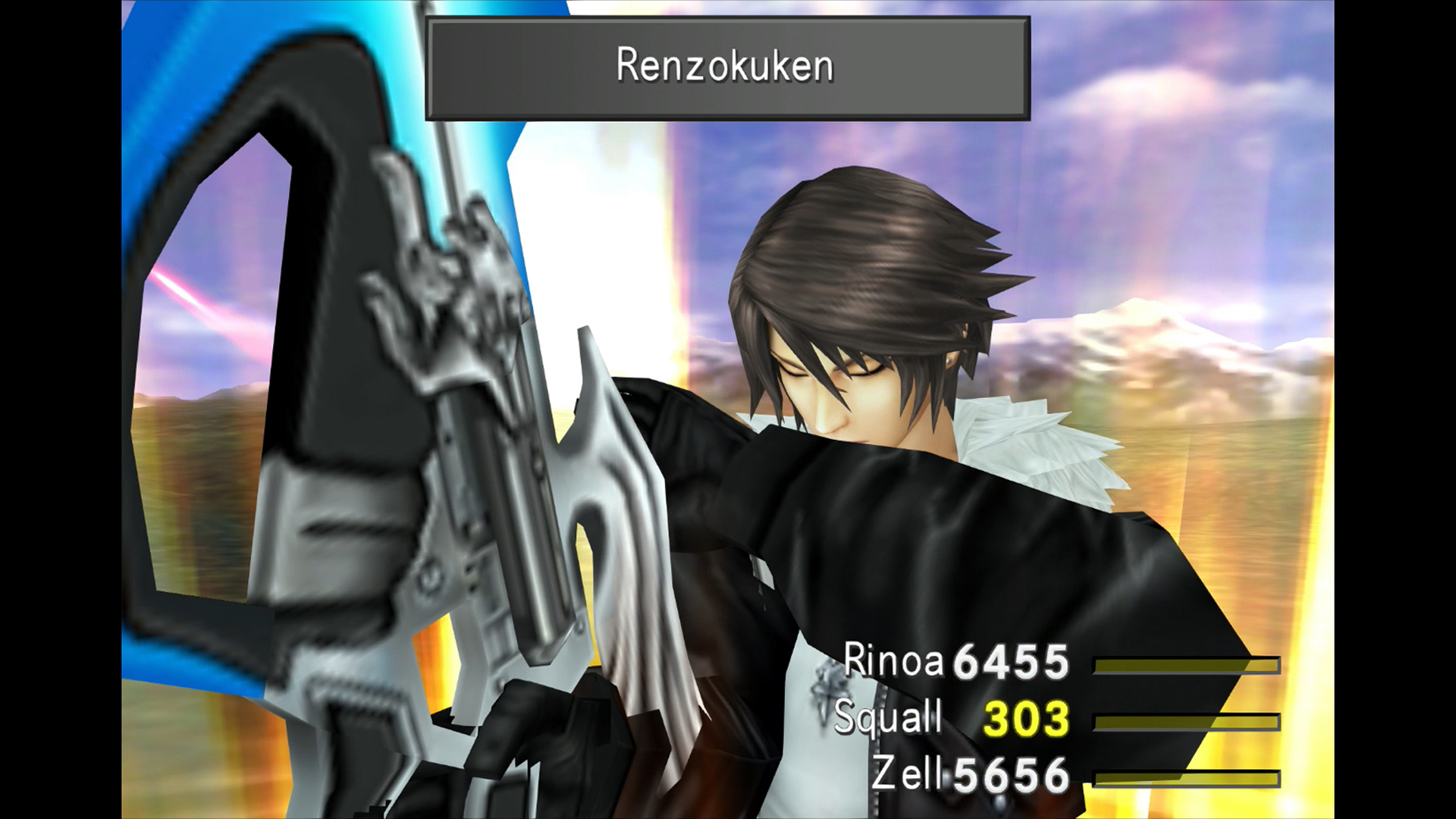
If Final Fantasy VII was more story-centric, Final Fantasy VIII was the polar opposite. Rather than focusing on the game’s school-life military blues story with a tacky love story shoved in, FFVIII just throws in a lot of crazy and innovative-for-its-time ideas for its combat and gameplay.
Using your summons as both a nuke and as a stats-boosting power-up, magic as a finite source that needs to be drawn from enemies and “hotspots”, enemies being the same level as you so that you can’t power-grind your way through the game. These mechanics plus a few others make this entry unique and memorable.
Final Fantasy VIII was also responsible for one of the greatest card-based minigame around: Triple Triad. There hasn’t been a more simple and addictive card game around that spawned off an RPG since Gwent.
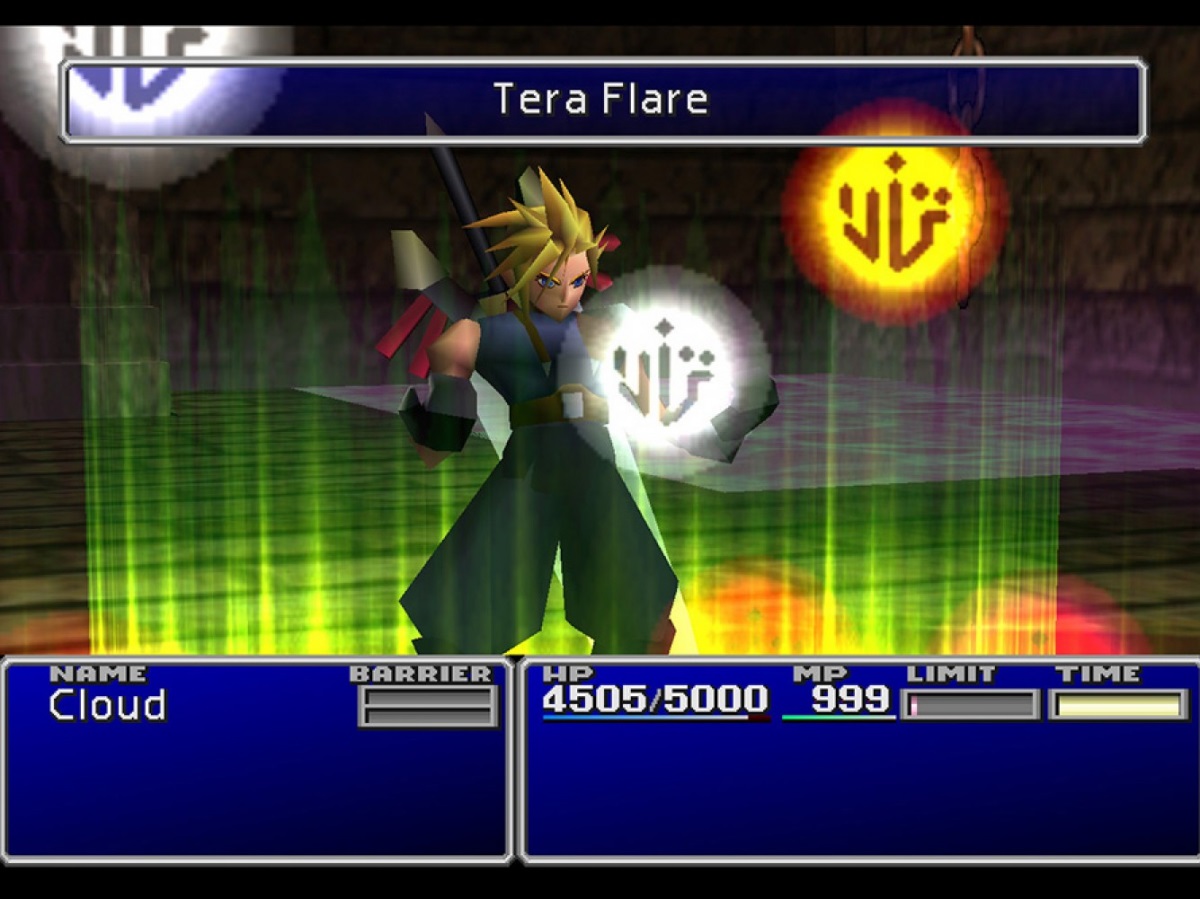
FFVII has not aged well, what with the new art styles and graphics of JRPGs and even within the series itself. The transition from small chibi-sized deformed 3D models to regular-sized characters in the battle screen is jarring in today’s context and it’s hard to go back to this. The battle system and Materia customization options are also made obsolete thanks to later entries that are even more worthy.
However, we remember FFVII because of its plot and character development. Main hero Cloud may seem like an aloof bad boy of a warrior, but he ends up being a flawed shell of a person who isn’t what he seems after the first third of the game. Main antagonist Sephiroth too is actually more of a pawn being led on and controlled by his heritage and bloodline.
And to say nothing of the allegories about the main corporation Shinra that dominates the landscape of FFVII’s world, which is all about globalization, corporate culture, and the fine line between activism and terrorism. FFVII’s story is smarter than it seems, and that’s why it takes precedence over everything else.
It’s also the most important one that brought the JRPG genre to mainstream status, meaning its cultural impact has placed it pretty high on this coveted list.
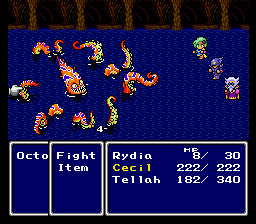
Most fans remember FFIV more for its characters and story, and why not? The game’s cast is clearly-defined and has specific Jobs & skillsets to round up the party composition.
However, the fourth mothership game is renowned for its expanded scope, its bold new step into the SNES era, and also its combat. FFIV introduced the game’s staple Active Time Battle system which led to fast-paced combat with that turn-based option-selecting feel. You can opt to switch it to turn-based mode, but where is the fun in that?
This change alone help set the precedence for other Final Fantasy games in the future. Also, the silly & melodramatic narrative of the series is in its base form here, tropes and all. The love triangle, the self-sacrifices, the personal journeys of self-discovery; all of it came from part 4. As such, FFIV is a great starting point for those who want to experience the 2D FF games in their prime.
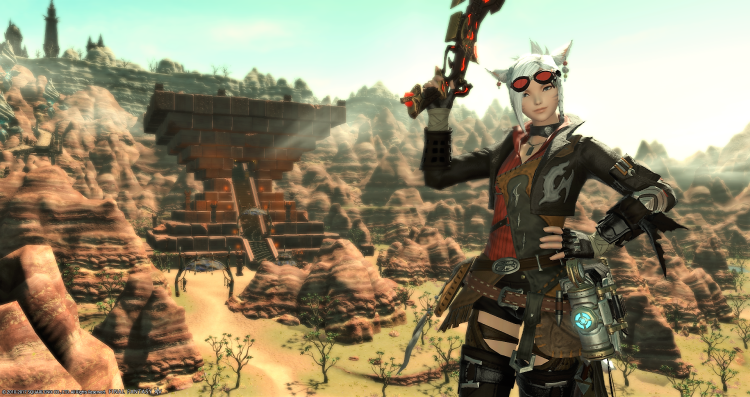
What a difference a few years can make. The revamp of Final Fantasy XIV, subtitled A Realm Reborn, was met with universal acclaim. It’s also still going on too, with its expansions Heavensward, Stormblood, and Shadowbringers adding in even more content for MMO players to play with.
Many of the boss fights and dungeons are lovely nods and throwbacks to past Final Fantasy titles. The game’s class system and combat go well within a group context of an MMO. And above all, the new FFXIV universe is a packed world that’s worth exploring and spending loads of time with.
FFXIV: ARR is the best mass multiplayer online version of a Final Fantasy game that’s currently online as we speak. Provided that you have the time and dedication to pay a monthly subscription fee for the game, you should jump in without fail.
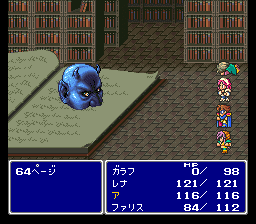
The fifth game in the series takes the best parts of part I and III, and basically made it into a much more fun, enjoyable, and most importantly, fair experience. FFV is Hironobu Sakaguchi’s last directorial FF work before handing over the reins to the new FF lead Yoshinori Kitase, and my it’s quite a sendoff.
The patented Job system is where the game is at: with more Jobs and more flexibility to the system. Boss fights and mob battles are more strategic and creative, as well as requires players to change up their Jobs to effectively fight them.
If you’re looking for the best version of a traditional Final Fantasy game without the design errors of past games, Final Fantasy V is perfect.
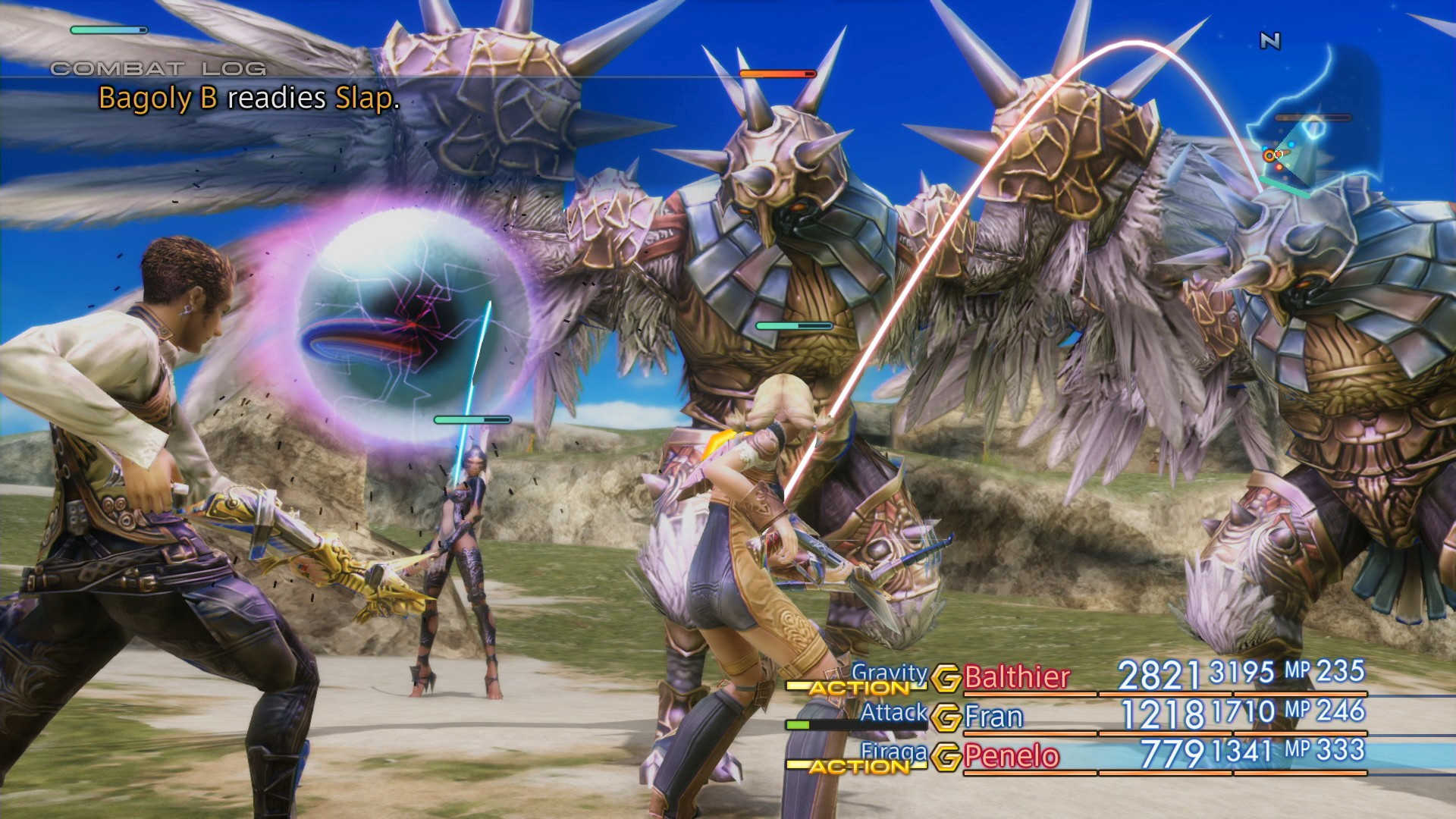
You cannot go wrong with this iteration of Final Fantasy, a series known for breaking new ground and taking risks. FFXII is the culmination of that design philosophy as it introduced an open world that is interconnected with one another and a real-time-ish combat system that is reminiscent of your MMO fares.
You aren’t given a clear directive on where to go when you start heading out into the wilderness, but that’s the beauty of it. Many sections of the game are purposely littered with a high-level monster so that the game leads you to the “correct†destination without outright telling you. Landmarks and mob placements help guide you so that you figure out the path on your own.
The game also introduces the Gambit system for combat. You basically set a bunch of commands to make your player characters attack and cast magic depending on the situation in the field. Yes, you can program the game to play itself but there are boss fights and special battles that will force you to retweak your Gambit settings and even perform commands on the fly.
These features, coupled with a grand story with political intrigue, actually makes Final Fantasy XII better with age. This entry encompasses the core value of a Final Fantasy title: the fact that it attempts to break new ground in the JRPG market while also keeping true to its magic and fantasy D&D-inspired roots.
Oh, and the soundtrack is also a thing of beauty.
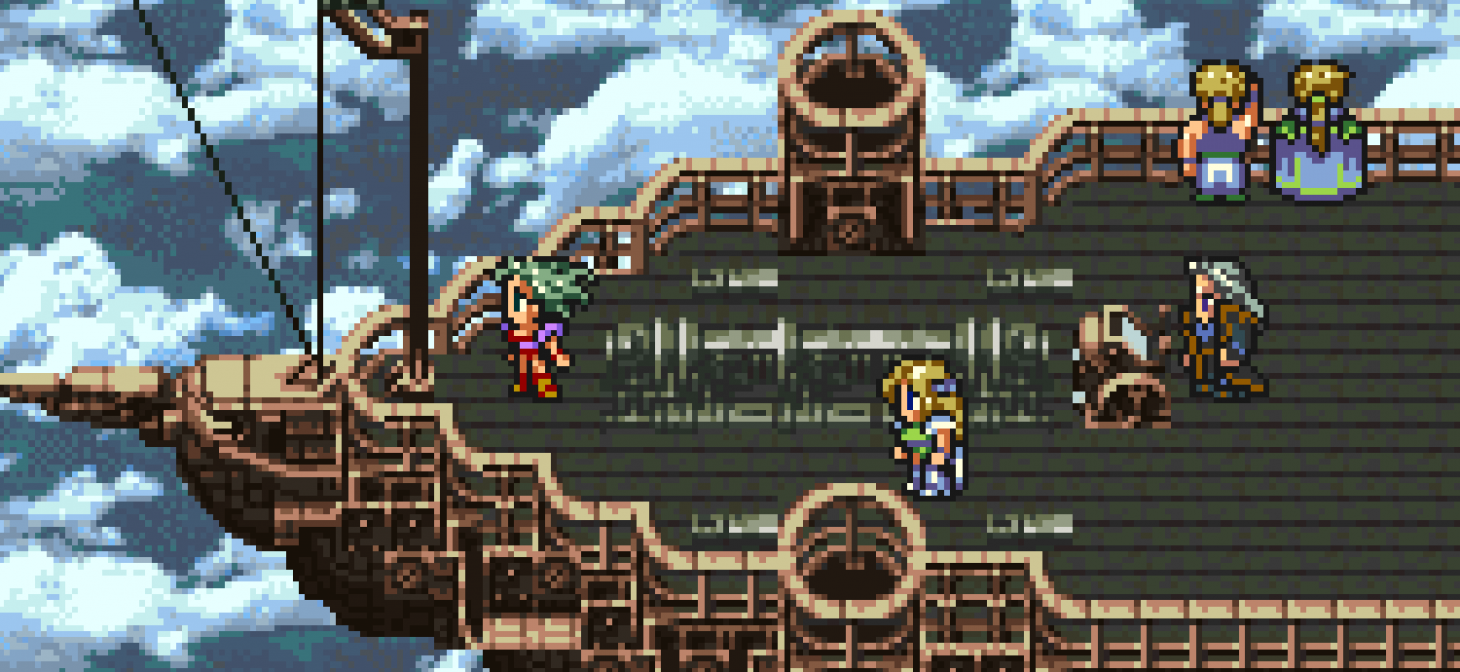
FFVI takes the old and the new, blends them together, and then amps it up further with great production values and game design that even hold up today.
How often have you had the second half of a game open up to you right after a world-ending catastrophe, and then having to split up into three groups to tackle its last dungeon? And how often does a game let its chief antagonist go from literal court jester to nihilistic megalomaniac who actually succeeds in his plan for world domination?
Not many JRPGs went this route; FFVI did this in the mid-90s and somehow it still resonates to fans and JRPG players to this day. Speaking of groups, FFVI has to this day the largest playable cast ever assembled for an FF game. Unlike other RPGs of that magnitude, every single one of them gets fleshed out and have their screentime and moments, provided you do your diligence in playing through their sidequests.
In short, Final Fantasy VI is the best game among the mothership titles because it is the full package. It is an epic rollercoaster ride that you will remember from start to finish.

By Xandria MordenVerified|May 15, 2023
Infinix gets hotter and hotter emerging as a trailblazer, consistently pushing the boundaries and delivering exceptional device to meet the ever-evolv...
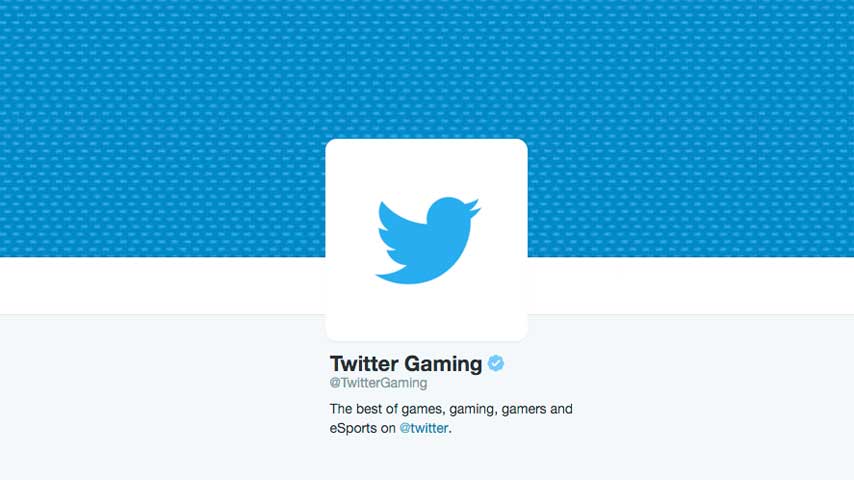
By KakuchopureiVerified|January 23, 2019
Far from its days of being merely a microblogging site, modern-day Twitter has evolved way beyond what it was pictured to be. In the multi-billion dol...
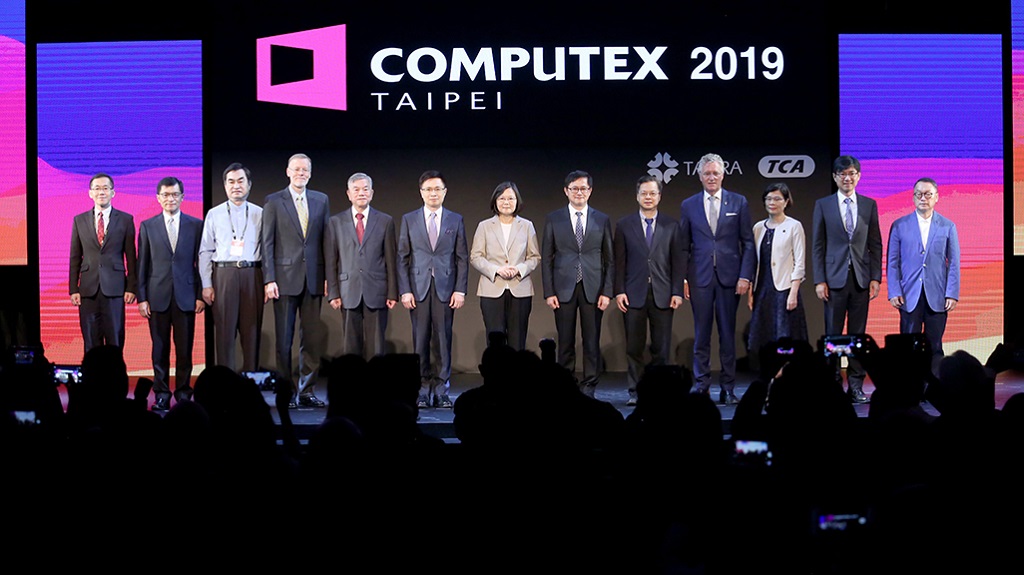
By Alleef AshaariVerified|May 31, 2019
Computex 2019, one of the world's biggest expos for everything related to computers, is about to end today after taking place in Taipei, Taiwan from 2...

By Jonathan Toyad|April 30, 2025

By Jonathan Toyad|April 9, 2025

By Jonathan Toyad|March 28, 2025

By Kakuchopurei|February 17, 2025

By Ali'sha Harris|February 16, 2025

By Lewis Larcombe|May 3, 2025

By Lewis Larcombe|May 2, 2025

By Jonathan Toyad|April 30, 2025

By Jonathan Toyad|April 9, 2025

By Jonathan Toyad|March 28, 2025

By Kakuchopurei|February 17, 2025

By Jonathan Toyad|April 30, 2025

By Jonathan Toyad|April 9, 2025

By Jonathan Toyad|March 28, 2025

By Kakuchopurei|February 17, 2025

By Ali'sha Harris|February 16, 2025
Copyright @ Kakuchopurei 2025
Distant Worlds: Music From Final Fantasy Returns To Malaysia In April 2019 – KAKUCHOPUREI.COM
December 19, 2018 at 11:27 am
[…] Here’s a sneak peek at how these awesome concerts sound like. While you’re here, how about checking out our ranking for each mothership Final Fantasy title? […]
The Best Final Fantasy Entry Gets The Polished Remaster It Deserves | KAKUCHOPUREI.COM
April 1, 2022 at 3:30 pm
[…] It’s no secret that Final Fantasy VI is the most beloved Final Fantasy entry out there. But to receive a respectful remaster while preserving its 16-bit SNES aesthetics? That’s new, considering Square Enix loves to whore out its old games in not-so-pleasant ways. […]
Uniqlo Celebrates Final Fantasy 35th Anniversary With 16 Unique T-Shirt Designs | KAKUCHOPUREI.COM
April 12, 2022 at 4:50 pm
[…] companies are collaborating for a Final Fantasy 35th Anniversary limited time t-shirt offer. About 16 of them, since there are 16 Final Fantasy mothership titles […]
Final Fantasy X Series Sales Top 20.8 Million | KAKUCHOPUREI.COM
July 20, 2022 at 3:35 pm
[…] Final Fantasy X and its sequel are renowned for its epic story, its memorable cast of characters, its themes, its reworked turn-based combat gameplay, and its humongous sphere system. Find out why it’s an awesome game to start with in our Final Fantasy ranking feature. […]